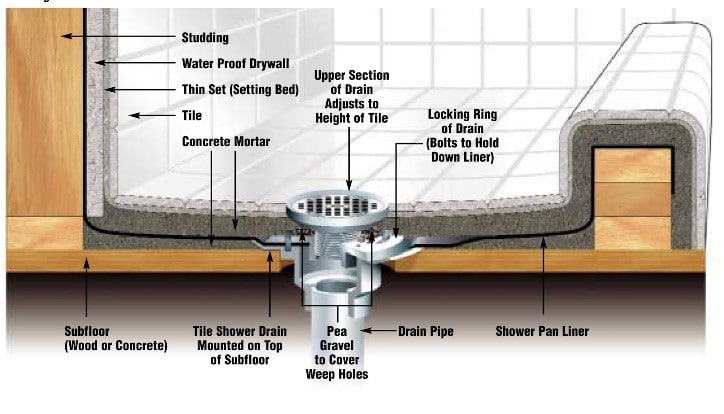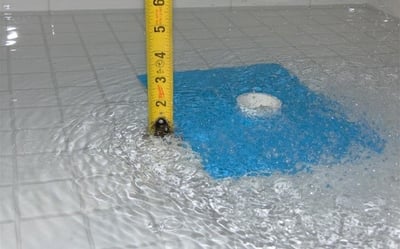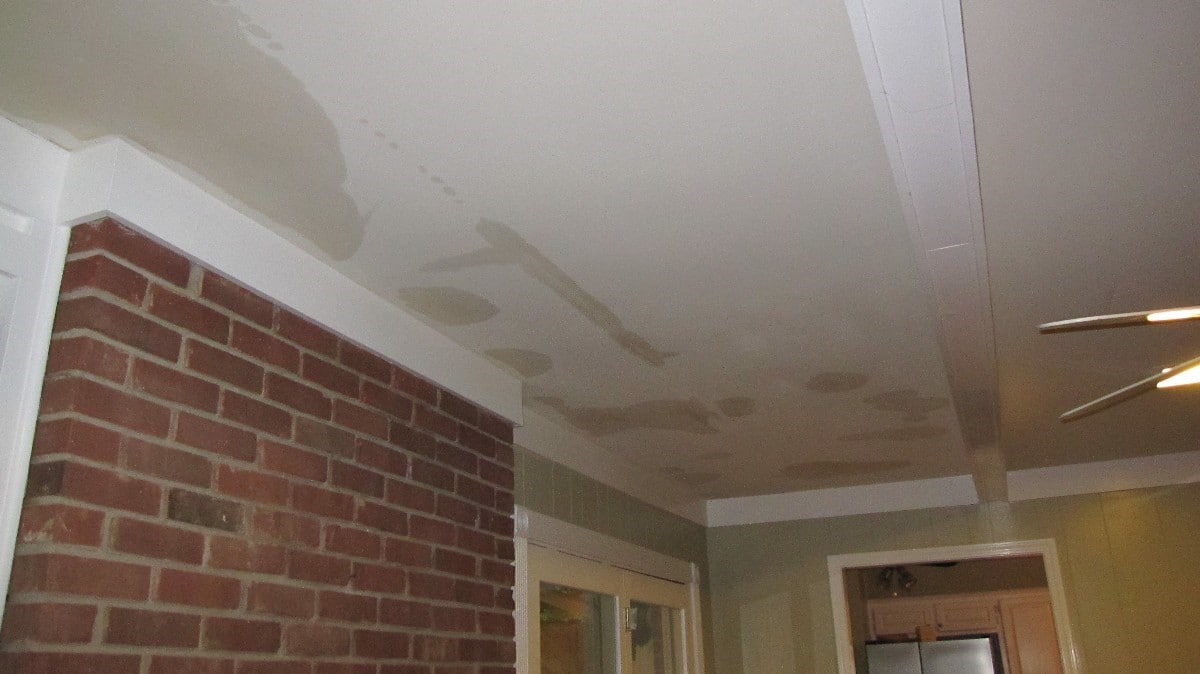I’ll lay out what a shower pan stress test is and then tell you why we don’t do it. And then I’ll tell you why no one else should do it. A good place to start is probably by showing an illustration of how a shower pan is designed and the makeup of all components.
What is a Shower Pan?

As you can see in the illustration, the shower pan liner is the critical component of the entire makeup of the shower pan. This is the waterproof membrane of the whole system. Without this, the system fails.
Part of the installation process is to “stress test” this shower pan liner before the tile, concrete, mortar, or thinset are installed. This is where the proverbial “rubber meets the road”. This is done by filling the shower pan with water while clogging the drain to make sure it holds that amount of water for AT LEAST 48 hours. This will vary in different regions of the country by requirement. The IPC requires it to hold at least 2 inches of water for 15 minutes. I’m not sure how telling that test would be.
When the pan proves to hold water it is finished out and in some regions another test may be required. The point here is the materials used to finish out the shower pan are not water proof. They are all designed to make the shower look nice and to provide a safe and non cellulose surface essentially. They also help divert water to the drain.
What is a Shower Pan Stress Test?

Now let's fast forward to the home inspection world involving shower pans. Some home inspector employ the practice of stress testing shower pans during the course of a routine, visual home inspection. This is a poor practice in my opinion and here’s why. The shower should be tested using its normal operation and it specifically states in the The American Society of Home Inspectors (ASHI) Standard of Practice that the inspector is not required to fill shower pans to test for leaks.
So imagine the scenario of a home inspector doing a stress test on an inspection of an occupied home that is 15 years old. The original owners of this home use the master shower at least daily and have in their ownership. The inspector decides to do a stress test of the shower pan during the inspection. There is a tear in the liner at the rear bottom corner in the very back of the stall that water has not hit in 15 years and can’t due to the angle and placement of the shower head. The shower stall curb is 6 inches high. A few minutes into this test, the old nail hole begins to leak. The inspector fills the shower pan as high as he can and then makes a mark on the pan to note the water level. He then proceeds to inspect the rest of the bathroom. All the while the shower is leaking down to the ceiling below. For round numbers we’ll say the shower is 5 feet by 5 feet at 6 inches deep. That’s 12.5 Cubic feet which equates to about 90 gallons of water. Oh my.

So we’ve had 90 gallons of water leak onto the ceiling below. Now the buyers decide they don’t want the house. Who is going to fix the ceiling below? Who is going to fix the hardwoods in the living room below the ceiling that has been damaged by the leaking shower pan that’s been fine for the last 15 years because water never hits the area where the leak occurred? Who is going to delve into the process of the shower pan? Does it need to be fixed? My experience tells me that the sellers are going to blame the home inspector for doing something to the shower pan. Then the home inspector is going to dig his heels in and say that he just performed a test and its faulty. Then the agent for the buyers is going to have to answer to the listing agent to figure out how to clean all this mess up. And all to discover something that would never have been discovered in any circumstance under normal operating conditions of the home.